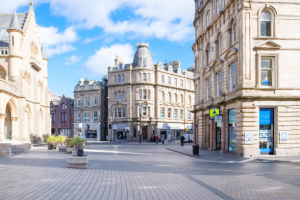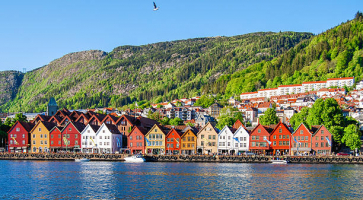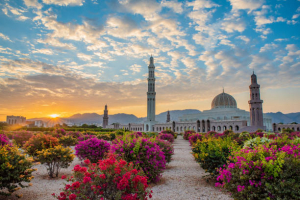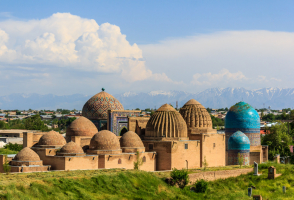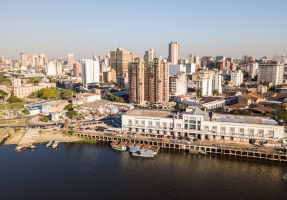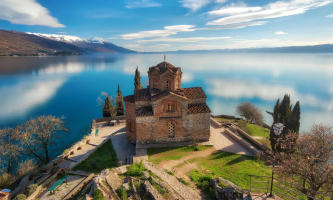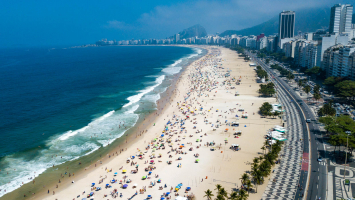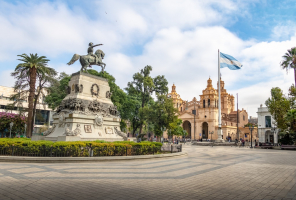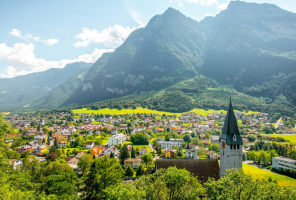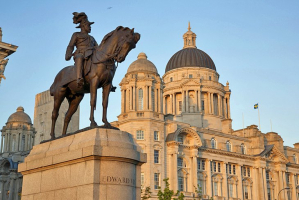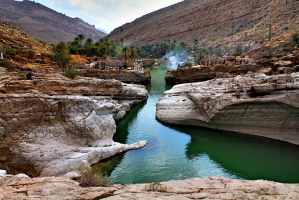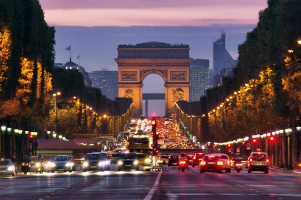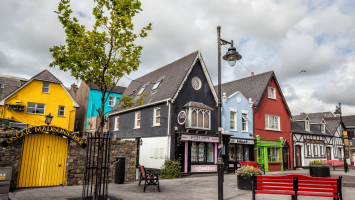Top 5 Reasons to Visit Saxony
Germany is one of the wealthiest and most developed countries in the world. People come to Germany on every trip not only to relax and entertain, but sometimes ... read more...also to learn and discover unique and new things. Germany is considered as a historical witness of the world. This place has experienced many fierce wars and possessed precious heritages. If you are passionate about exploring but don't want to be noisy, try coming to Saxony, and enjoy your sightseeing journey.
-
Saxony is a beautiful natural picture of Germany. Over the centuries, it has won the hearts of artists, locals, and tourists alike. Saxony brings indescribable peace and tranquility. The state of Saxony has many lakes, rivers, and canals. The longest rivers include Elbe, White Elster, and Lusatian Neisse. Most of its landscape is hilly and alpine, except a small portion of the land in the North. Therefore, it is not difficult to see herds of sheep grazing in fields of wildflowers.
Saxony is surrounded by vineyards and colorful old houses, with Renaissance churches and serene canals. This is one of the reasons that there are so many spas and resorts in Saxony. The peaceful and quiet environment here is very suitable for rest and relaxation. The diverse nature of the region offers many opportunities for active vacations and fun-filled family vacations. Saxony also has many easily accessible travel options. Enjoy the great outdoors like cross-country skiing and alpine skiing, hiking through snow-covered forests, or taking a romantic car ride.
The picturesque valleys between Leipzig and Chemnitz are home to castles, palaces and numerous gardens. The lands combine with one of the largest forested areas in Central Germany, providing ideal terrain for hikers, cyclists and horse riders. Strolling on the grassy and flowery paths is enough to make the soul relax and comfortable. No need for experiential activities, the atmosphere in Saxony will help you dispel the fatigue of a long day.
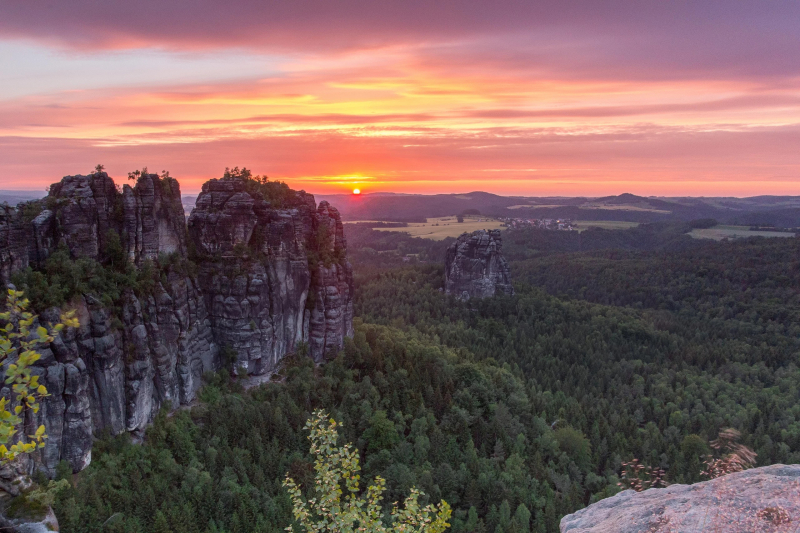
visitsaxony.com 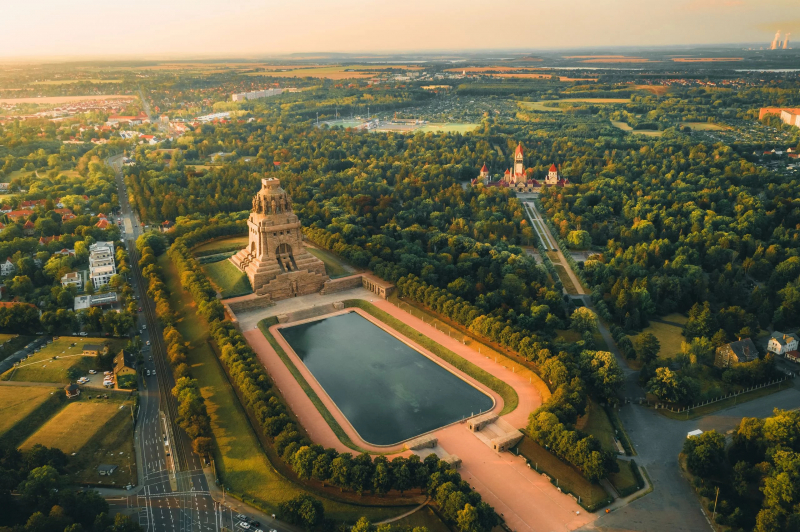
visitsaxony.com -
German cuisine is rich and varied with high-quality and often locally sourced ingredients. Because this country is the intersection of many cultures, the cuisine is different, including not only traditional food but also a mixture of many dishes from immigrants around the world. In addition to famous typical dishes such as Traditional Potato Salad, German Sausage, German Beer, Pork Roll with Pickled Cabbage, Beef Roll/ Rinderrouladen, etc. Saxony also has many other typical dishes. Casserole with beer in Saxony is very famous. The casserole is cooked to the right temperature, and submerged in a rich beer and spice broth, creating a perfect flavor. Or like the Leipziger Allerlei, the year-round local dish includes seasonal vegetables and communal crayfish stew.
The main courses are rich in protein and meat, perhaps balanced by delicious and tasty sweets. The Eierschecke cake with a cake base, a quark cheesecake in the middle, and a vanilla custard layer on top. Its parts are coated with a glaze made of cream, whole eggs, sugar, and flour to thicken. Another snack is the Pflaumentoffel - juicy dried plums, which can be found everywhere. Quarkkeulchen, Saxon pancakes made with finely mashed potatoes and cheese, topped with cinnamon are enough to make anyone swoon. Especially the traditional Dresdner Christstollen, a beloved and preserved local delicacy. Unlike other conventional fruit breads loved throughout Germany, Dresdner Christstollen's fruit bread has a class of its own.

Gürgi 
Gürgi -
Saxony's historic towns and cities are charming destinations full of character, and their splendid castles, palaces, and gardens delight visitors with their splendor. It is also home to historic steam trains and has a long and fascinating history of automobile manufacturing, creating exceptional experiences for visitors. World-class museums and exhibitions of the Saxon State Art Collection in Dresden or modern art collections in Chemnitz and Leipzig. Music, art and books, trade fairs, sports, and the Monument to the Battle of the Nations – Leipzig has many fascinating aspects to explore.
A city steeped in history, with a youthful spirit and innovative urban vibes. Definitely makes for an enjoyable visit! The beautiful German city of Dresden attracts visitors with its history, culture, and streetscape. Before being destroyed during World War II, Dresden was a center of art, classical music, and architecture. Gradually, the city was reborn and today is home to more than 40 museums, 13.000 cultural monuments, and the venue for concerts and events year-round. In Dresden, significant buildings continue to rise from the ashes. The splendid Katholische Hofkirche was rebuilt in the mid-1980s. Also rebuilt was the Semperoper opera house with its Baroque and Renaissance styles. Leipzig, the largest city in the state, is a dream destination to learn about culture, museums, brilliant churches, and many world-famous theaters.
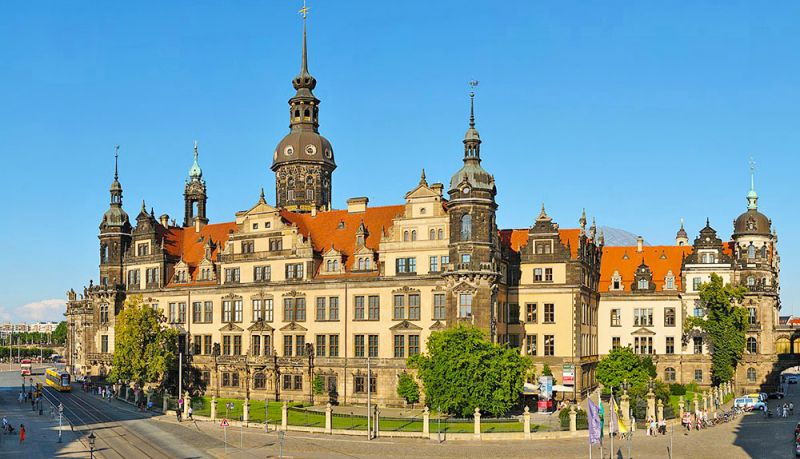
peacetour 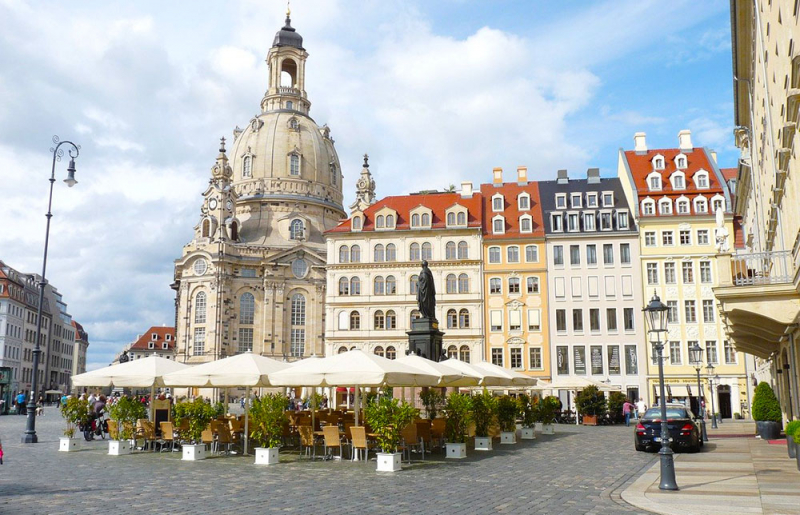
peacetour -
Saxony is a state of the arts of Germany. Saxony is the intersection of thousands of years of cultural history. Rich in internationally renowned art and culture, the state capital of Saxony is known for its beautiful baroque old town and some of the most famous museums in the world, including the Old Masters Gallery or the Historic Green Cellar. The Neustadt neighborhood offers an interesting contrast with its modern art galleries, craft shops, boutiques, clubs, and bars.
Discover top art and culture, world-renowned traditional handicrafts, and unique landscapes. Music, art and books, trade fairs, sports, and the Monument to the Battle of the Nations – Leipzig has many fascinating aspects to explore. Some 1,000 palaces, castles, gardens, and manors bear witness to the glorious cultural history of Saxony. Wine, porcelain, castles, and parks – The Saxon Wine Route between Pirna and Diesbar-Seußlitz combines delicious flavors with great history and Mediterranean flair.
Great hiking trails, a long history of musical instrument making, and spa traditions characterize Vogtland in southwestern Saxony. Explore the region's "music corner", Plauen, or indulge in water sports at the Pöhl Dam. Wherever you go, the locals always welcome you as guests. In each city, there is a distinct, rich and diverse culture. Each journey will have a different story to listen to and learn from.
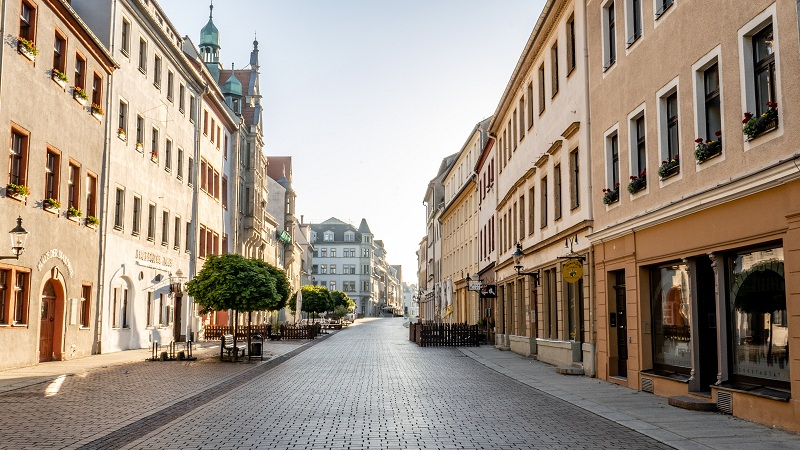
duhocisa.edu 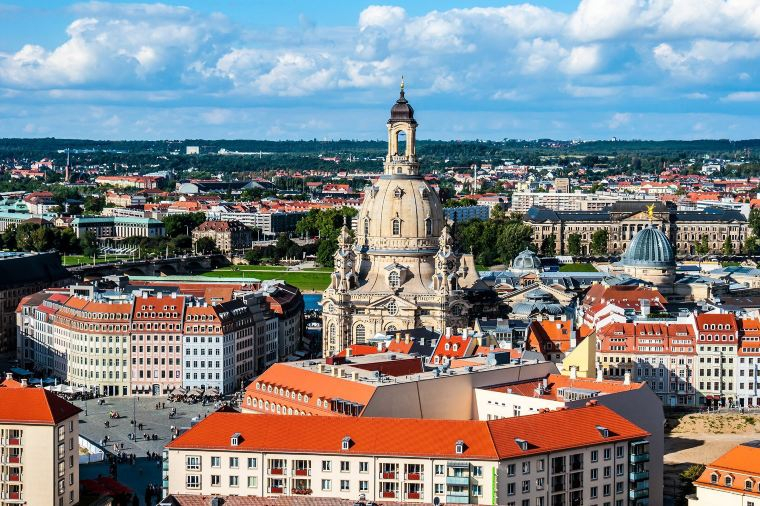
vn.trip -
Saxon Switzerland National Park is an ideal destination for hikers, mountaineers, cultural tourists, and cyclists on the Elbe Cycling Route. East Saxony is a cycling, hiking, and watersports paradise that is growing thanks to the emerging Lusatian Lakelands. The area amazes with its wealth of cultural treasures, whether in Görlitz, Zittau, or Bautzen. Muskau Park is a superb example of Britain's most beautiful horticultural landscape. Saxony is home to two UNESCO World Heritage Sites: “Murkowski Park/Muskauer Park” in Bad Muskau on the Polish border and the “Erzgebirge/Krušnohoří Mining Area” in the Ore Mountains.
Distinct as the elegantly landscaped park sites here and the mining history there, both strengthen Saxony's reputation as Germany's number one cultural destination. In addition, both locations have one thing in common: They cross national borders and are therefore great symbols of relations with neighboring Poland and the Czech Republic. The Gunzenhauser Museum with the most important Expressionism collection in Germany, the Villa Esche, which is part of Europe's Henry van de Velde Route, or the Museum of Industry – Chemnitz is a city full of surprises and will be the European Capital of Culture by 2025. Mount Ore is not only one of Germany's most beautiful low-mountain landscapes, but also a veritable hiking and mountain biking paradise with stunning views, such as from "Kammweg", a trail along the mountainside. Furthermore, steamboats, famous wooden crafts, and Christmas traditions make the Ore Mountains a unique tourist destination.
If you’re after outdoorsy adventures, you’ll be delighted to hear that Saxony offers more than just one spot to explore the wondrous German landscapes. What’s probably one of the most beautiful national parks in Germany, lures with mythical, finger-like rock formations, gorgeous valleys, waterfalls, and an array of hiking trails and climbing routes. The highlights of a trip to the Saxon Switzerland park are the Bastei bridge, Lilienstein table mountain, and the jagged Schrammstein rocks.
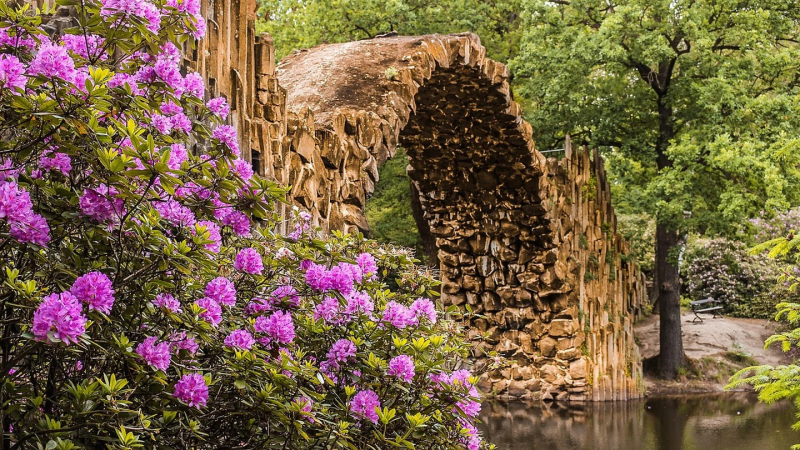
theculturetrip 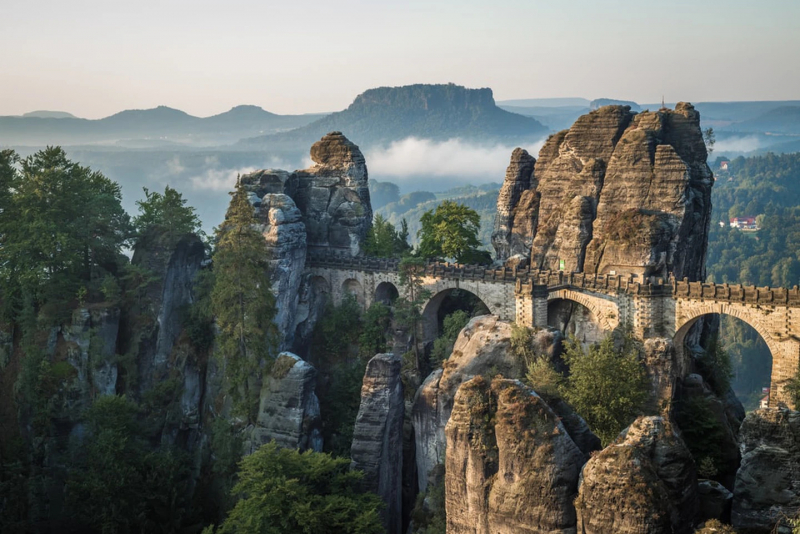
theculturetrip








